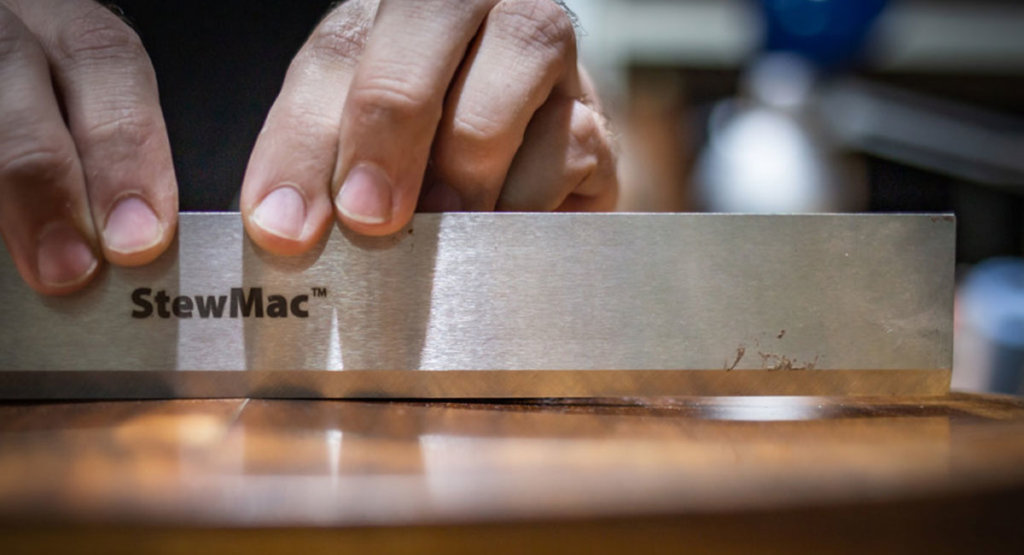Depending on where you live, dealing with less-than-ideal humidity can be a seasonal battle or a challenge all year round.
Fortunately, there are steps you can take to regulate and manage humidity levels in your guitar’s immediate surroundings. There are also some clear signs of humidity damage that you should keep an eye out for and ultimately prevent.
But first,
Why does humidity matter to guitars?
Guitars are built in a controlled environment. The same goes for storing the wood used to build these guitars. Many experts (like the ones over at Taylor) state the ideal humidity to be at 45-55%, but 40-60% is generally acceptable. There’s a good reason why there’s this need for a regulated humidity – when wood is too wet, it makes gluing difficult. And the same goes for an environment that is too dry – wood tends to warp and split.
In a tropical climate, high humidity is a constant battle all year round, but those of us who experience the four seasons aren’t spared from these issues either. In the winter seasons, the dry climate requires guitars to be humidified, and when it starts getting humid during the summer, they need to be dehumidified.
- Guitars want to be as close to 40-50% humidity as possible. That’s the environment they were manufactured in.
- A happy medium is 45%.
Are electric guitars spared from the effects of humidity?
Unlike acoustic guitars, solid body electric guitars are crafted from a thick, solid piece of wood. Even a hollow body electric guitar like a Gibson ES-330 uses a significantly thicker plies of wood for its top compared to that of an acoustic.
As a result, the body of an electric will not be as susceptible to the effects of humidity as an acoustic guitar, but proper storage still matters. Other parts of the guitar like its fretboard and metal parts can oxidise due to the high humidity.
What does humidity damage look like?
We expose our guitars to the environment constantly, when it travels from home to the stage, placed in a car boot or airplane overhead compartment – guitars are meant to be played. But once put back into their case and stored, it doesn’t mean they are spared from the elements.
Here in Part One, We share some of the common tell-tale signs that your guitar has suffered damage from humidity based on the type of weather you’re experiencing.
Your Weather Forecast: Cold and dry
Here are four common signs that your guitar has suffered from dehydration:
Fret buzz
The first thing you will likely hear is a bit of fret buzz.
As a guitar dries out, the neck will start to backbow more, causing your strings to get much closer to the frets near the nut (usually the first seven or eight frets). In some cases, the neck can backbow enough that the strings will be resting on the first fret itself.

Credit: Advisor Music
There are many different things that can cause a guitar to buzz, but if the air is starting to feel more dry, or it’s winter-time where you live and you’re starting to turn on your heater at home, a rattling guitar likely means it’s beginning to dry out and it’s time to humidify it.
“Fret sprout”
The first thing you’ll feel on acoustic and electric instruments that are too dry are the sides of their frets poking out from the neck.
Wood expands and contracts with moisture far more than metal does. This difference between wood and metal leads to “fret sprout”, where the edges of the fret crown and tang extend away from the wood of the neck.
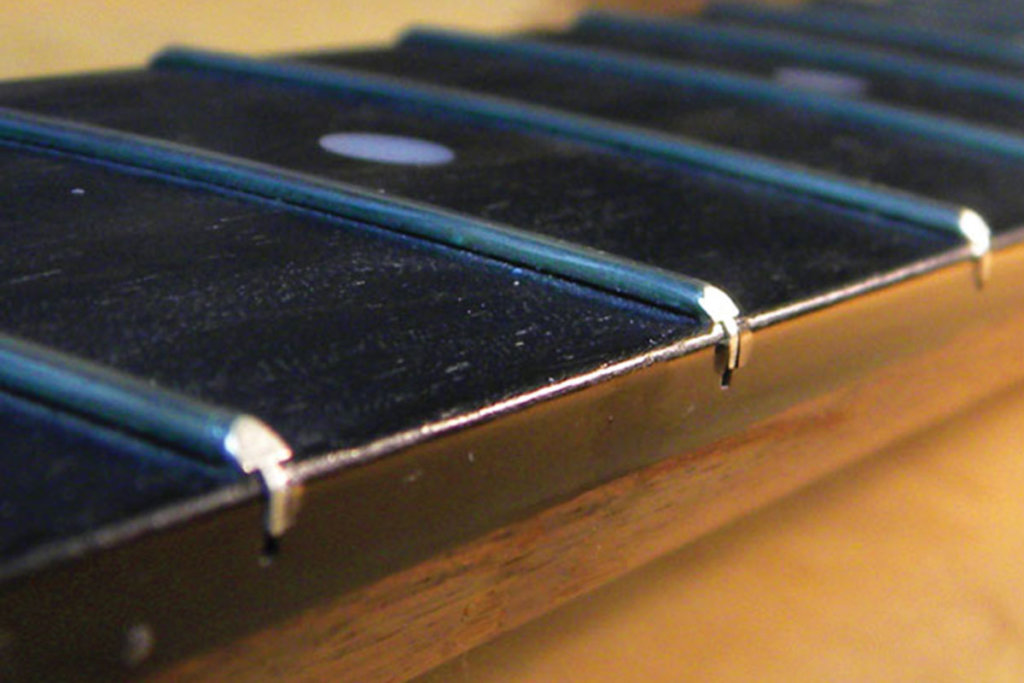
Credit: Premier Guitar
Frets are filed flush with the surface of the wood when they’re installed, so when that wood shrinks down as it dries out from a low-humidity environment, those frets will be the first thing you feel.
Most of the time, this may just feel uncomfortable and noticeably more rough, but in extreme cases it can even scrape or cut your hand and fingers during playing.
On guitars with a finish over the side of the fretboard, this “fret sprout” can also cause the finish to delaminate and form bubbled areas as the fret tang pushes it away from the side of the neck, in some cases even causing the finish to flake off entirely.
Split seams (acoustic/hollow guitars)
Another common problem you may face with acoustic guitars that are too dry, are guitar tops that start to open up along their center-seam, where the two pieces of wood are joined.
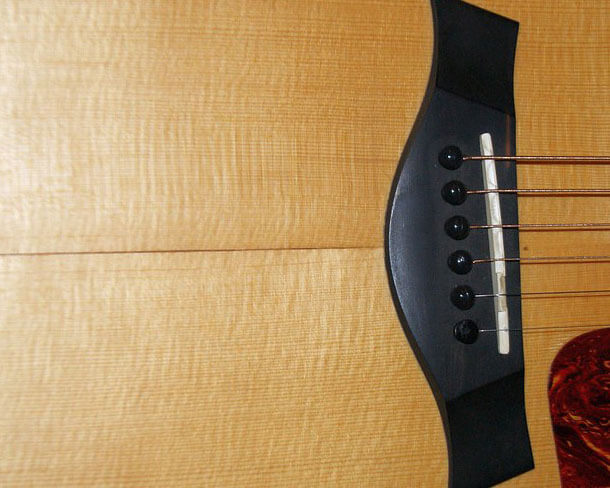
Credit: Acoustic Guitar Forum
This can even run directly under your bridge, causing it to loosen up, and in some cases, would mean that you need to remove the bridge to close and repair the seam.
Similarly, you can also see cracks form in the grain lines of the wood in other areas, where the wood itself is splitting.
In both situations, re-humidify your guitar so the crack can close on it’s own before being glued or cleated in place.
Guitar tops that cave in (acoustic guitars)
Acoustic guitars specifically will also see the top start to cave in slightly. Even though they’re called “flat tops”, all acoustic guitar tops have a slight dome shape to them (usually around a 30-40 foot radius depending on the guitar style and manufacturer).
Dry guitars will start to dip inwards, taking the bridge along for the ride. This lowers your action substantially, which will also cause buzzing all over the neck. In some cases, the bracing pattern under the top will become visible as the wood moves and contracts around it.
Your Weather Forecast: Hot and humid
“Wet” guitars generally experience a different set of problems.
Here are four common signs that your guitar has suffered from high humidity:
Swelling below the bridge

Instead of tops that sink in, high moisture content in the top and back of the guitar will cause the wood to swell and belly behind the bridge. As the top rises, the action becomes unusually high, making playing more difficult. The swelling can also cause the corners of the bridge to pop loose.
Glue joints can fail
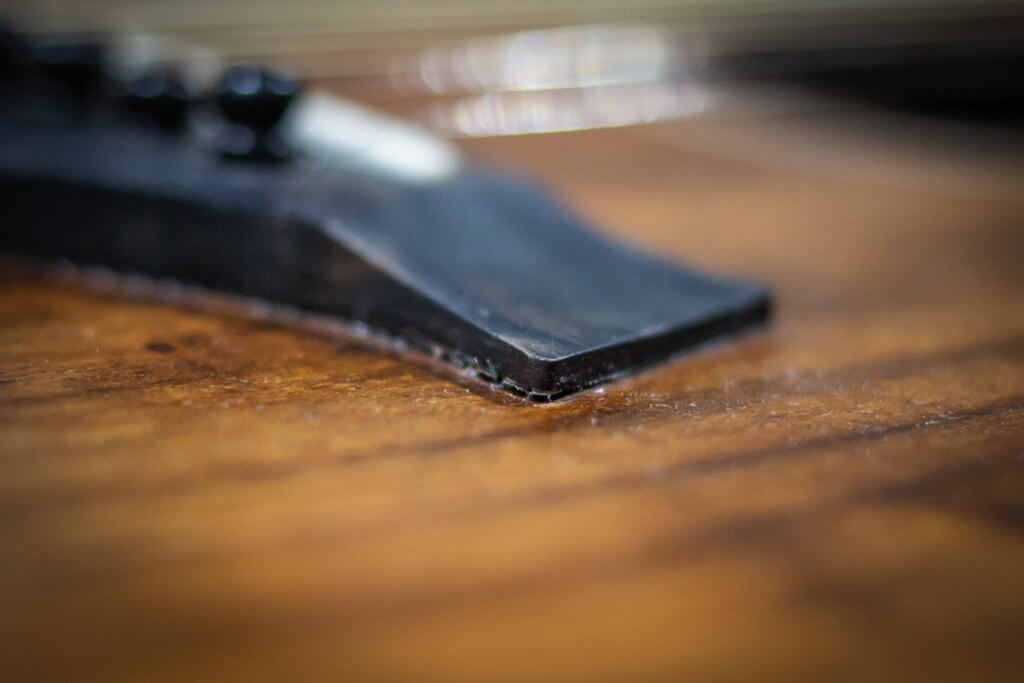
The glue that holds the joints and braces can loosen, affecting the instrument’s structural integrity. Tone becomes lifeless and dull.
Frets and nut have “shrunk”
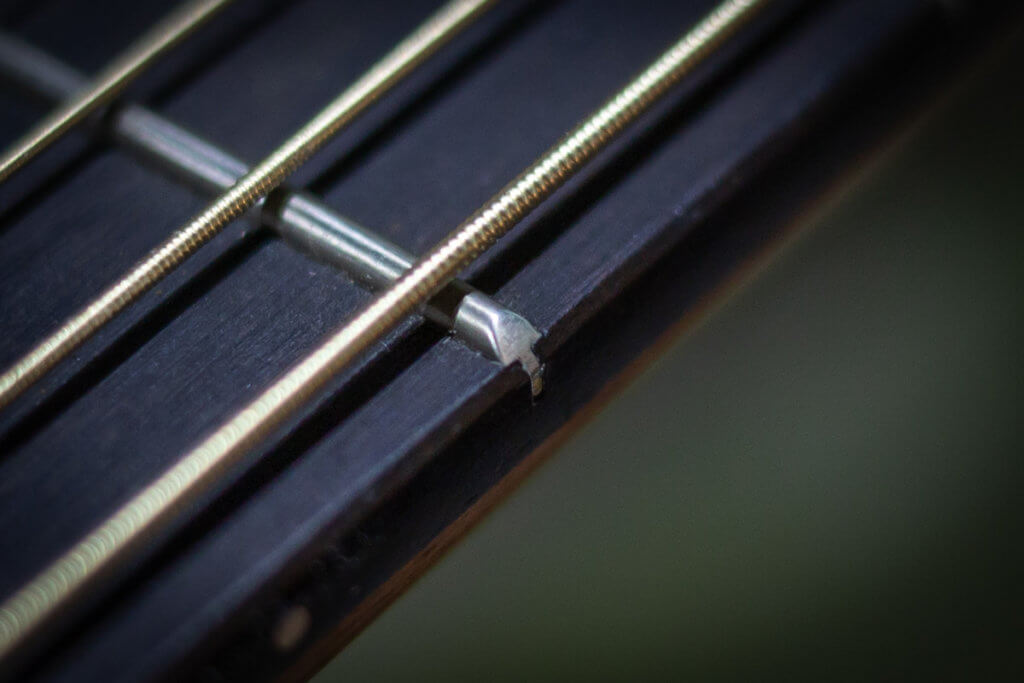
The frets don’t sit flush with the edge of the fretboard. The fretboard has expanded due to the high moisture content. High moisture also causes the frets and metal components to start oxidizing.
Split seams (acoustic/hollow guitars)
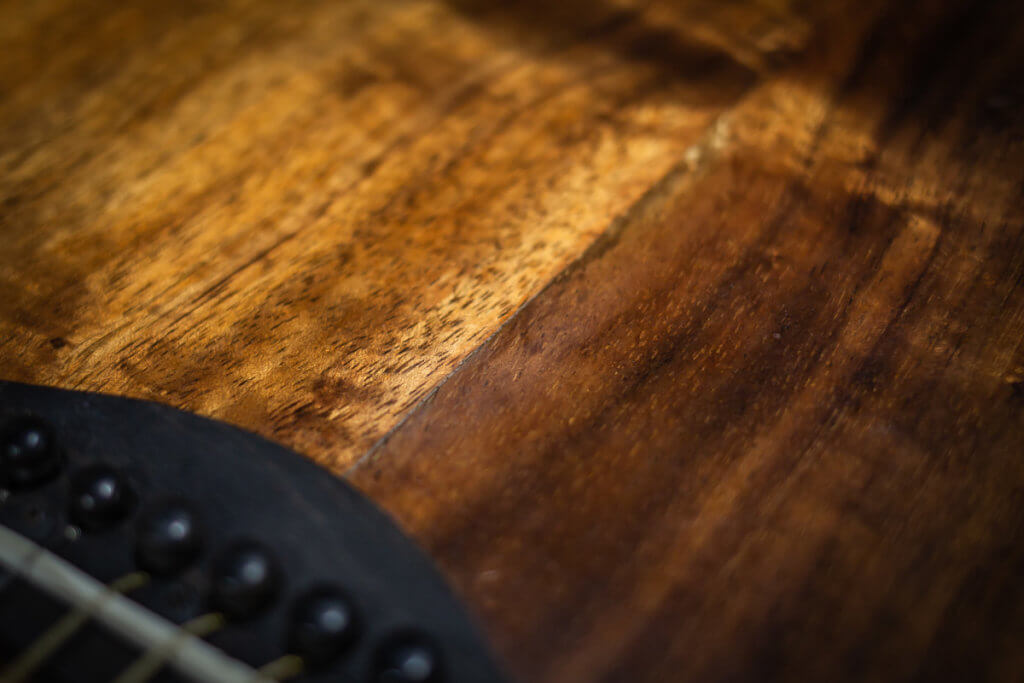
Just like guitars that are too “dry”, guitars that have too much moisture content may develop tops that start to open up along their center-seam, where the two pieces of wood are joined.
Tips for managing humidity
Wherever you are, and no matter what season you’re in, there are easy ways to remove and introduce the right amount of water content from your guitar.
We’ve compiled some of our best tips for Part 2 of this article.
Stay tuned and follow us @monocreators for the latest updates on this series.
Special thanks to luthier James Gay from Well Played Gear for sharing his invaluable insight with us as we put this piece together
